Fall brings more than turkey, candies, and the smell of pumpkin-spiced lattes, the season also welcomes animals and insects, including the smallest ants. The warmth and coziness of your home may become the target of an ant invasion. One way to deal with this is to contact ant control services near you. However, there are also a few eco-friendly DIY preventative measures you can take.
Ant Invasion and Cold Weather

Ants in your house in cold seasons, whether during fall and winter, can be such a buzzkill. Just like other species, it’s the time of the year for stocking up on food. This phenomenon also extends to the behaviour of ants so you might end up finding them in your kitchen and dining room scavenging for the tiniest morsels. You may even notice carpenter ants with wings flying around your home during the cold months.
According to a recent journal released by Stanford, using pesticides all year round is futile in ant colony prevention. Data showed that ant colonies become more active during summer droughts, rains, and cold seasons. Ant home invasions have a direct correlation between the weather and insect behaviour patterns. These migrations are attributed to the unusual biology of ants and their primal instinct for survival.
Frigid and dry climates will drive them towards your home as they seek better shelter and protection from the elements. Equipped with powerful limbs and pincers, they can penetrate any surface and build their homes in any part of your house.
Winter Preparations — Start of the Fall Invasion
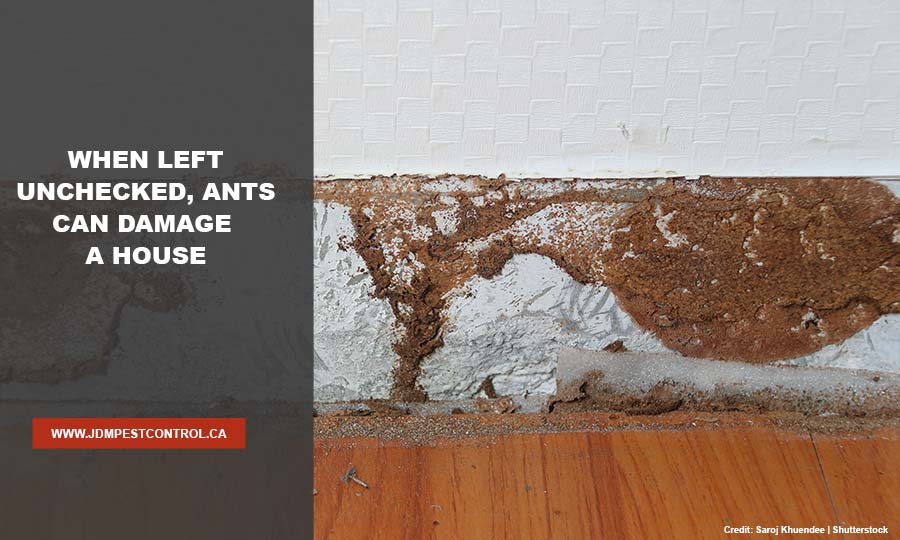
From window frames, doors, and walls, ant colonies could be hiding in plain sight at your homes. Seeing an ant trail is a definite sign of a thriving indoor colony. Filled with crumbs and leftover food, your winter home is a gold mine for any ant colony struggling to find food outside.
Your food stock, however, is not the only thing in danger. Their tunnels and colonies could destroy your home’s structure as well. When left unchecked, you might end up with damaged and brittle walls, ceilings and floors. So, how can you effectively control them?
Well, the dilemma lies in the ant species that is common in North America. The Argentine ant, which has been known to be the most invasive ant species, has multiple queens. So, instead of wasting your money and harming your health by using too much pesticide, it’s better to track down where their presence is more prevalent and only use pesticides when necessary.
It’s also important to take note that ants are excellent diggers and engineers. They will build their colonies in parts of your home that are difficult to reach. So, to fully eliminate them, you have to investigate deeper and take some preventive steps. These methods will include using airtight food containers, storing fruits in the fridge, wiping down counters and tables, sealing window and door gaps, and regular vacuuming.
Tips on Preventing a Home Invasion
No one wants unwanted guests — even more so, if these guests are there to steal your food and destroy your home! Well, one of the best ways to prevent these ants from wanting to be your house guests is to make them feel unwelcome. How can you do that? Simply closing your doors won’t do it. You have to take the extra step and follow these precautionary measures:
- Search for a colony outside your home
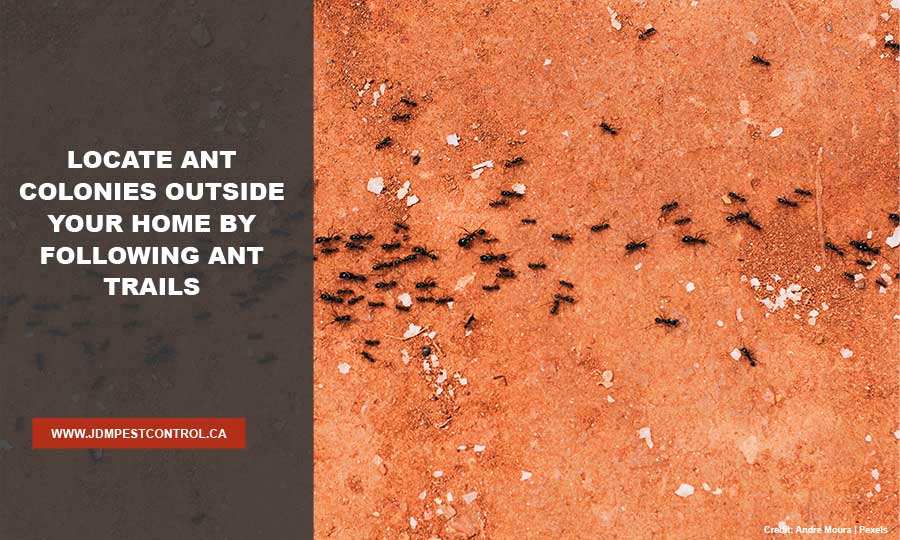
Before starting your quest inside, you first need to explore the perimeters of your property. Natural ant control outside your home is essential for keeping them at bay. You can start your inspection by looking out for ant mounds in your garden and backyard.
Take note of the possible ant colonies and carefully open them for a clearer look. Be sure to wear the proper footwear and protective gear when doing so to avoid any painful bites.
Once you’ve found any active ant mounds, you can start cleaning them. A simple and safe way to do this is by pouring down hot and steaming water into the entryway. Follow this up by carefully flattening and neutralizing the mound to make sure that no new colony forms.
You can then check on the mound after a few days to see if any ants are still present. If so, repeat the steps until the colony is fully eliminated.
However, if these outdoor ant colonies are only on your porch or patios, try using pesticides or pouring down alcohol and vinegar down the hole. Wait for a couple of minutes and you can then flush it with running water.
- Deploy baits for scouts
Finding the exact location of the ant colony inside your home can be difficult. Hidden underneath floorboards and within walls, it’s virtually impossible to pinpoint every ant colony. So, instead of going directly to the source, you can try baiting them with food and adding poison to it. One of the most common household ingredients used for this is boric acid.
Once they bring the contaminated crumbs to their colony, the ants will slowly die and the colony will be wiped out. You can also buy ready-to-use ant bait granules and ant barrier spray. Once you’ve bought some, you can place these baits in their foraging paths. The effectiveness of the bait system will take some time, but its effects are long-term.
- Seal your home
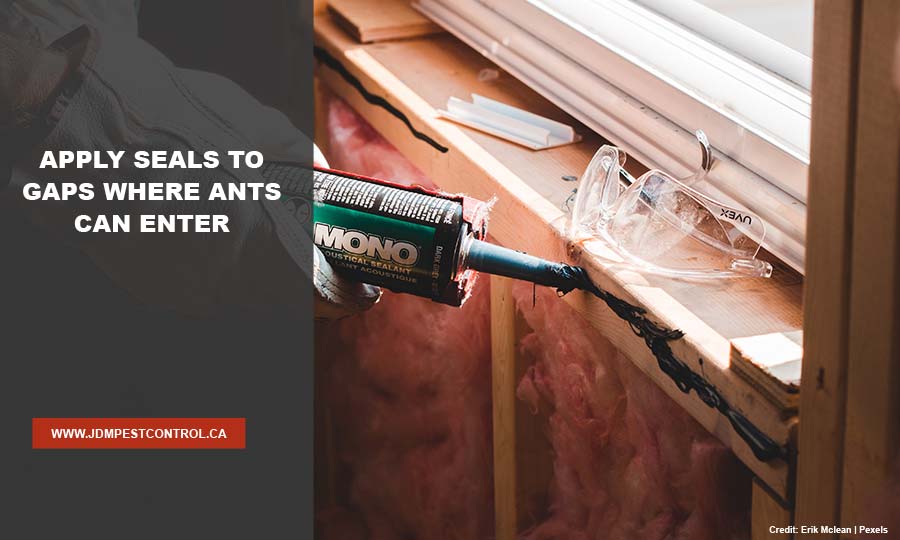
If you close a door, the ants will find a window to get into. Resourceful and great adventurers, ants can pass through any nook and cranny and invade your home in a snap. That’s why it’s important to seal your home during the winter and fall months. From window cracks and door spaces, you have to be vigilant of the places in your home that are susceptible to ant entry.
List down these possible gateways, and once you’ve done so, cover and reapply some sealant. This step does not only keep ants at bay but also helps in preventing drafts. You can even incorporate pesticide into the sealant material to deter any ants planning to break it down. Always remember to regularly inspect these seals to repair and reseal them as needed.
- Use sealed containers for food and pantry products
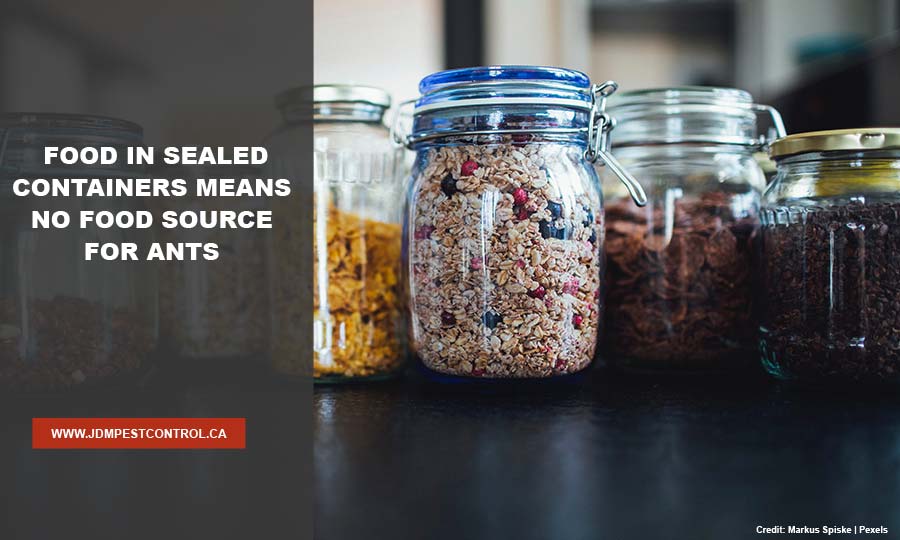
Using airtight containers for your kitchen is a simple and elegant way in stopping ant home invasions. Sealed food boxes not only help in preventing ants from getting into your food but it slows down spoilage as well. You can even gradually shift to using reusable and refillable containers for your cereal and other pantry products. Doing so can greatly help the environment since it eliminates any additional uses of plastic.
- Clean regularly
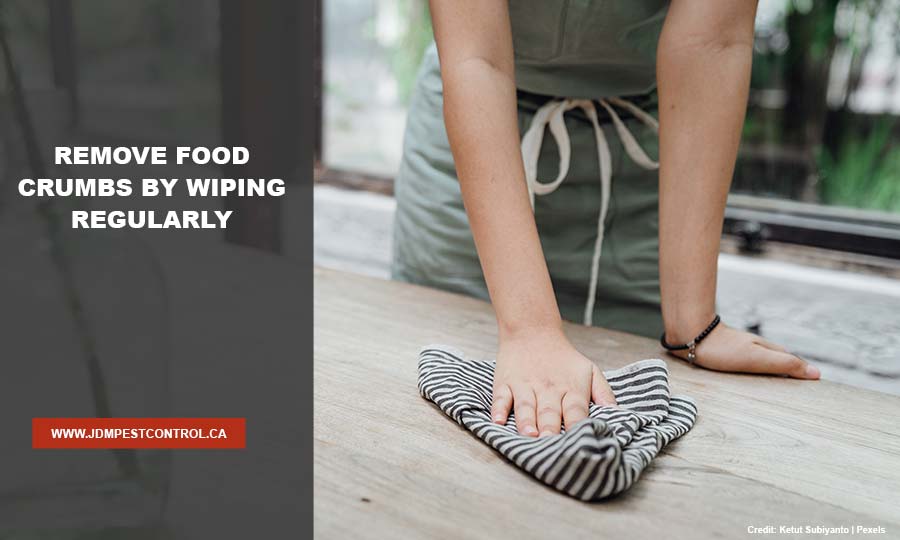
Cleaning your house daily throughout the year is already a given. However, the fall and winter months demand more effort and frequency. Even if colder climates will usually decrease the amount of dust in the air the dust and dirt would still gather in corners and surfaces.
Add to the situation the crumbs and food particles and you’ve got a house prepped for an ant home invasion. To prevent any ant colonies from getting enough food, you should wipe off surfaces regularly, wash the dishes right after use, and sweep the floors everyday.
- Use an Ant barrier
Ant barriers can come in different ways. From sprays, bait, and pesticides, looking for the right ant control product that is pet safe and nontoxic can be quite difficult. You can always buy ant traps on Amazon, but it’s best to ask your local expert ant pest control company. If you’re really not into using factory chemicals, you can always go to your kitchen and use household items.
You can use duct tapes and petroleum jelly on door and window cracks to trap the ants. Or use detergent and hot water to safely get rid of colonies without destroying your hardwood boards and plants.
- Fix plumbing issues
Problems with your pipes can cause more than clogged-up sinks. Winter and fall are the time of the year when snow can cover up your pipes. These dry and isolated tubes will become an entryway for ant home invasions or be an actual place for a colony.
The Stanford study also found out that ants like cold and wet conditions so dripping issues must be fixed. To fix plumbing issues, schedule a plumber appointment. Once it’s been fixed, you can be sure that no ant will be tempted to climb those waterspouts and invade your home.
Companies have developed eco-friendly and safe pesticides that can be sprayed anywhere in your home. However, if you are only targeting a specific space of your house, chances are, the ant colony will just transfer to another location carrying their queen and protecting her at all costs. Hence, using pesticides would be more or less ineffective in completely killing them off.
To make sure that your home is completely free from any insect invasion during fall, start doing some preventative steps. As a homeowner, you don’t always have to deal with poisonous chemicals for pest control. By doing these eco-friendly steps, starting outside and going into your home, you won’t have to waste money buying pesticides anymore. You can finally control your ant invasion and enjoy your autumn season better.
If you want safety and convenience on getting rid of pests look no further than JDM Pest Control. Call us today at (416) 729-3568 or email us at joe@jdmpestcontrol.ca for a free assessment.